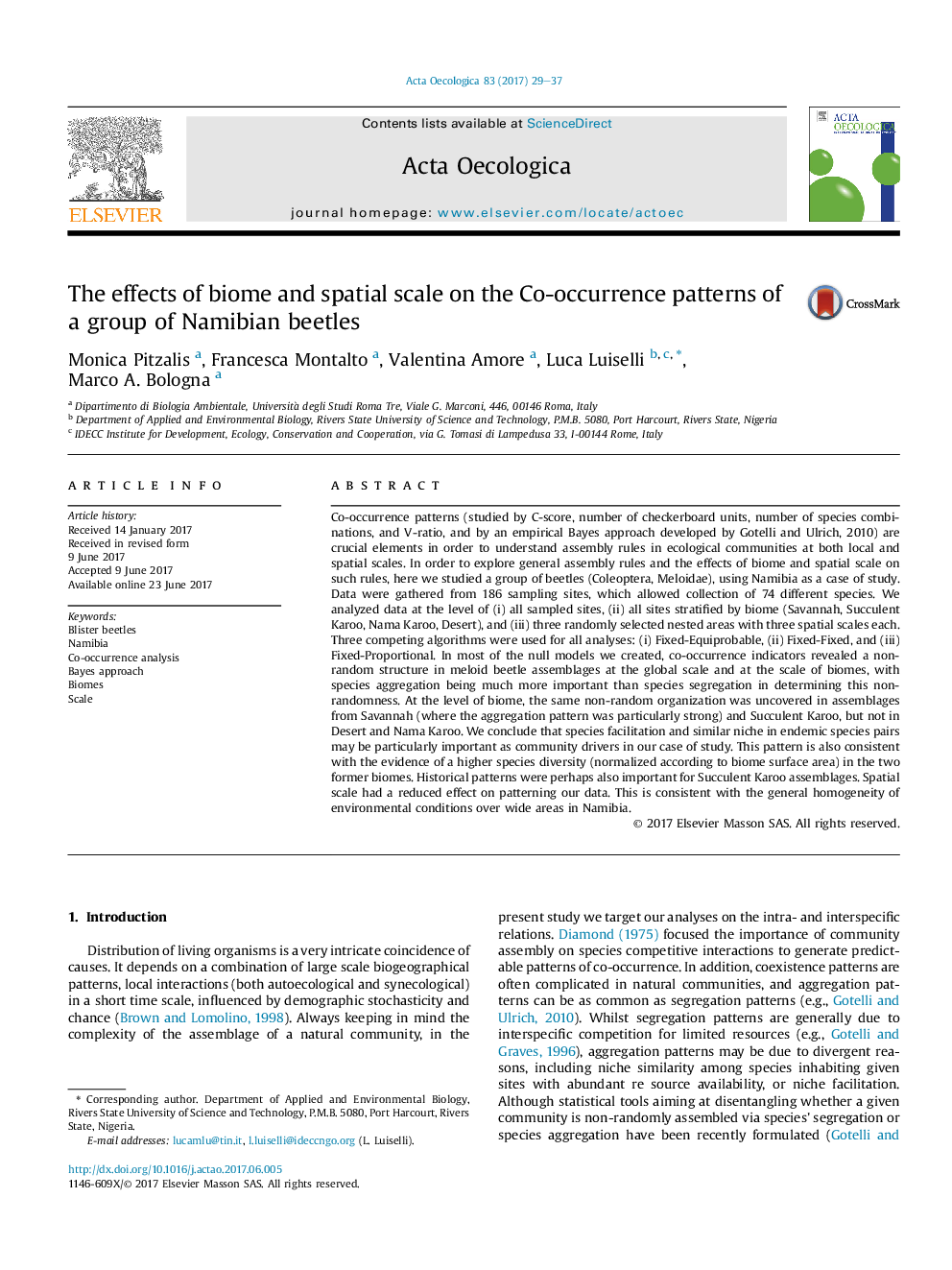| Article ID | Journal | Published Year | Pages | File Type |
|---|---|---|---|---|
| 5742462 | Acta Oecologica | 2017 | 9 Pages |
â¢Community assembly rules should be different in simplified versus complex ecosystems.â¢Namibian blister beetles do represent good models.â¢Analyses revealed a moderate effect of scale.â¢Nonrandom structure was uncovered in the most species-rich biomes.â¢Namibian desert is suitable for community assembly studies in very simplified ecosystems.
Co-occurrence patterns (studied by C-score, number of checkerboard units, number of species combinations, and V-ratio, and by an empirical Bayes approach developed by Gotelli and Ulrich, 2010) are crucial elements in order to understand assembly rules in ecological communities at both local and spatial scales. In order to explore general assembly rules and the effects of biome and spatial scale on such rules, here we studied a group of beetles (Coleoptera, Meloidae), using Namibia as a case of study. Data were gathered from 186 sampling sites, which allowed collection of 74 different species. We analyzed data at the level of (i) all sampled sites, (ii) all sites stratified by biome (Savannah, Succulent Karoo, Nama Karoo, Desert), and (iii) three randomly selected nested areas with three spatial scales each. Three competing algorithms were used for all analyses: (i) Fixed-Equiprobable, (ii) Fixed-Fixed, and (iii) Fixed-Proportional. In most of the null models we created, co-occurrence indicators revealed a non-random structure in meloid beetle assemblages at the global scale and at the scale of biomes, with species aggregation being much more important than species segregation in determining this non-randomness. At the level of biome, the same non-random organization was uncovered in assemblages from Savannah (where the aggregation pattern was particularly strong) and Succulent Karoo, but not in Desert and Nama Karoo. We conclude that species facilitation and similar niche in endemic species pairs may be particularly important as community drivers in our case of study. This pattern is also consistent with the evidence of a higher species diversity (normalized according to biome surface area) in the two former biomes. Historical patterns were perhaps also important for Succulent Karoo assemblages. Spatial scale had a reduced effect on patterning our data. This is consistent with the general homogeneity of environmental conditions over wide areas in Namibia.
